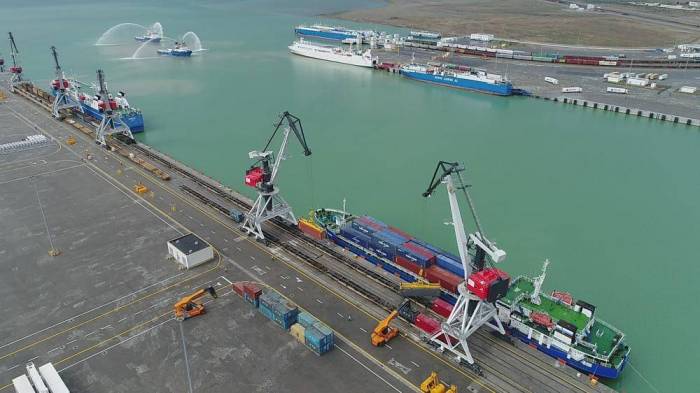The volume of cargo transshipment reached two million tons, 86 percent of which fell on the share of transit cargo during 1H2018.
The largest growth rate was observed in the volume of container traffic during this period.
Thus, 10,746 containers in TEU equivalent were registered in 1H2018, which is 53 percent more than in the corresponding period of last year.
Passenger transportation has increased by 37 percent.
Some 19,965 passengers have used the services of the Baku port for the past six months. Thus, 16,526 passengers (82.8 percent of total) traveled to Turkmenistan, 3,439 passengers (17.2 percent of total) to Kazakhstan.
The transshipment of rail cars reached 21,960 units at the ferry terminal in the Alat village. As many as 9,409 wagons (42.8 percent of the total) were deployed in the Baku-Turkmenbashi-Baku direction, 161 wagons (0.8 percent of the total) in the Baku-Aktau-Baku direction, 12,390 wagons (56.4 percent) in the Baku-Kuryk-Baku direction.
Some 9,512 multi-tonnage vehicles have used the services of the Baku port for the past six months of this year.
Of these, 5,353 units (56.3 percent of the total) were deployed in the Baku-Turkmenbashi-Baku direction, 4047 units (42.5 percent) in the Baku-Aktau-Baku direction, 112 units (1.2 percent) in the Baku-Kuryk-Baku direction.
The transshipment of crude oil and oil products through the oil terminal increased by 30 percent to 280,000 tons in 1H2018.
The cargo transshipment potential of the port, which opened on May 14, 2018 with the participation of Azerbaijani President Ilham Aliyev, is 15 million tons in the first phase, including 100,000 containers per year. Seven berths of 12 existing ones serve dry cargo vessels, two berths serve ferries, and another two berths serve vessels of Ro-Ro and Ro-Pax type. One berth is used for the maintenance of the fleet of the port.















































